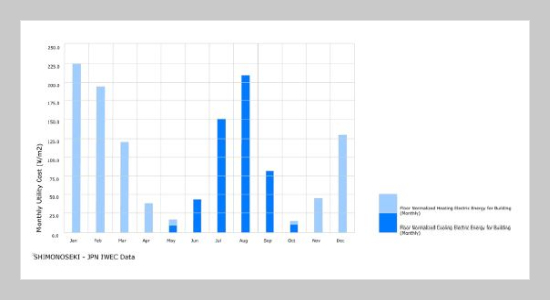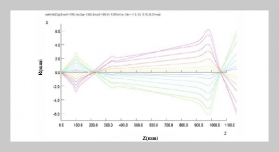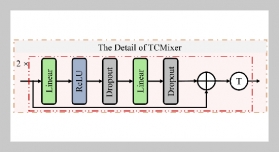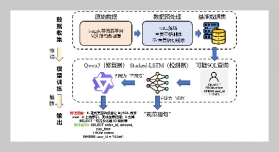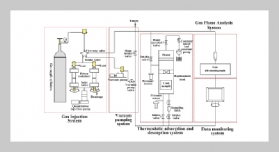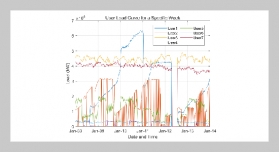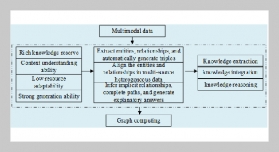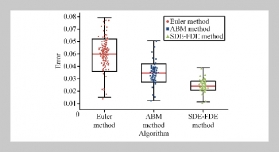Rendy Perdana Khidmat1,2, Hiroatsu Fukuda3, Beta Paramita This email address is being protected from spambots. You need JavaScript enabled to view it.4, and Kustiani5
1Graduate School of Environmental Engineering, The University of Kitakyushu, Japan
2Department of Infrastructure and Regional Technology, Institut Teknologi Sumatera, Indonesia
3Department of Architecture, Faculty of Environmental Engineering, The University of Kitakyushu, Japan
4Department of Architecture, Faculty of Technology and Vocational Education, Universitas Pendidikan Indonesia, Indonesia
5Department of Architecture, Faculty of Engineering, Bandar Lampung University, Lampung, Indonesia
REFERENCES
- [1] Rivka Oxman. Thinking difference: Theories and models of parametric design thinking. Design Studies, 52:4–39, 2017.
- [2] Jingyu Zhang, Nianxiong Liu, and Shanshan Wang. A parametric approach for performance optimization of residential building design in Beijing. Building Simulation, 13(2):223–235, apr 2020.
- [3] Riccardo Talami and J Alstan Jakubiec. Early-design sensitivity of radiant cooled office buildings in the tropics for building performance. Energy and Buildings, 223, 2020.
- [4] Shady Attia, Jan L.M. Hensen, Liliana Beltrán, and André De Herde. Selection criteria for building performance simulation tools: Contrasting architects’ and engineers’ needs, 2012.
- [5] Dana Mohammad Ahmad Hamdan and Fabiano Lemes de Oliveira. The impact of urban design elements on microclimate in hot arid climatic conditions: Al Ain City, UAE. Energy and Buildings, 200:86–103, 2019.
- [6] Roberta Cocci Grifoni, Simone Tascini, Ernesto Cesario, and Graziano Enzo Marchesani. Cool façade optimization: A new parametric methodology for the urban heat island phenomenon (UHI). In Conference Proceedings - 2017 17th IEEE International Conference on Environment and Electrical Engineering and 2017 1st IEEE Industrial and Commercial Power Systems Europe, EEEIC / I and CPS Europe 2017, 2017.
- [7] Atsuko Tani. Interdisciplinary Discussions on Sustainable Use of Wood Structure and Fire Risk - Situation in Japan and Austria. In Proceedings of the enviBUILD 2019, pages 202–207. 2020.
- [8] Beta Paramita, Hiroatsu Fukuda, Rendy Perdana Khidmat, and Andreas Matzarakis. Building configuration of low-cost apartments in Bandung-its contribution to the microclimate and outdoor thermal comfort. Buildings, 8(9), 2018.
- [9] Ladybug EPW Map.
- [10] Andrea Zani, Michele Andaloro, Luca Deblasio, Pierpaolo Ruttico, and Andrea G. Mainini. Computational Design and Parametric Optimization Approach with Genetic Algorithms of an Innovative Concrete Shading Device System. In Procedia Engineering, volume 180, pages 1473–1483, 2017.
- [11] Rendy Perdana Khidmat, M. Shoful Ulum, and A. Dwi Eva Lestari. Facade Components Optimization of Naturally Ventilated Building in Tropical Climates through Generative Processes. Case study: Sumatera Institute of Technology (ITERA), Lampung, Indonesia. In IOP Conference Series: Earth and Environmental Science, volume 537. Institute of Physics Publishing, aug 2020.
- [12] P. Janssen and J. Frazer. Generative Evolutionary Design: a Framework for Generating and Evolving Three- Dimensional Building Models. 2005.
- [13] Sunisa Sansri and Somlak Wannarumon Kielarova. Multi-objective shape optimization in generative design: Art deco double clip brooch jewelry design. In Lecture Notes in Electrical Engineering, volume 449, pages 248–255. Springer Verlag, 2017.
- [14] Jonathan Natanian, Or Aleksandrowicz, and Thomas Auer. A parametric approach to optimizing urban form, energy balance and environmental quality: The case of Mediterranean districts. Applied Energy, 254, 2019.
- [15] Emanuele Naboni, Jonathan Natanian, Giambattista Brizzi, Pietro Florio, Ata Chokhachian, Theodoros Galanos, and P. Rastogi. A digital workflow to quantify regenerative urban design in the context of a changing climate. Renewable and Sustainable Energy Reviews, 113, 2019.
- [16] Jonathan Natanian, Patrick Kastner, Timur Dogan, and Thomas Auer. From energy performative to livable Mediterranean cities: An annual outdoor thermal comfort and energy balance cross-climatic typological study. Energy and Buildings, 224, 2020.
- [17] Jonathan Natanian and Thomas Auer. Beyond nearly zero energy urban design: A holistic microclimatic energy and environmental quality evaluation workflow. Sustainable Cities and Society, 56, 2020.
- [18] Ibrahim Elwy, Yasser Ibrahim, Mohammad Fahmy, and Mohamed Mahdy. Outdoor microclimatic validation for hybrid simulation workflow in hot arid climates against ENVI-met and field measurements. In Energy Procedia, volume 153, pages 29–34, 2018.
- [19] Jonathan Graham, Umberto Berardi, Geoffrey Turnbull, and Robert McKaye. Microclimate analysis as a design driver of architecture, 2020.
- [20] N. Delgarm, B. Sajadi, F. Kowsary, and S. Delgarm. Multi-objective optimization of the building energy performance: A simulation-based approach by means of particle swarm optimization (PSO). Applied Energy, 170:293–303, may 2016.
- [21] Rahman Azari, Samira Garshasbi, Pegah Amini, Hazem Rashed-Ali, and Yousef Mohammadi. Multiobjective optimization of building envelope design for life cycle environmental performance. Energy and Buildings, 126:524–534, 2016.
- [22] Farshid Shadram, Shimantika Bhattacharjee, Sofia Lidelöw, Jani Mukkavaara, and Thomas Olofsson. Exploring the trade-off in life cycle energy of building retrofit through optimization. Applied Energy, 269, 2020.
- [23] Kavan Javanroodi, Vahid M. Nik, and Mohammadjavad Mahdavinejad. A novel design-based optimization framework for enhancing the energy efficiency of high-rise office buildings in urban areas. Sustainable Cities and Society, 49:101597, aug 2019.
- [24] Patricia E. Camporeale and Pilar Mercader-Moyano. Towards nearly Zero Energy Buildings: Shape optimization of typical housing typologies in Ibero- American temperate climate cities from a holistic perspective. Solar Energy, 193:738–765, nov 2019.
- [25] Rhino - Rhinoceros 3D.
- [26] Scott Davidson. Grasshopper Algorithmic Modeling for Rhino, 2015.
- [27] Mostapha Sadeghipour Roudsari and Michelle Pak. Ladybug: A parametric environmental plugin for grasshopper to help designers create an environmentally-conscious design. In Proceedings of BS 2013: 13th Conference of the International Building Performance Simulation Association, pages 3128–3135, 2013.
- [28] Jonathan Natanian, Or Aleksandrowicz, and Thomas Auer. A parametric approach to optimizing urban form, energy balance and environmental quality: The case of Mediterranean districts. Applied Energy, 254, 2019.
- [29] Jonathan Natanian and Thomas Auer. Balancing urban density, energy performance and environmental quality in the Mediterranean: A typological evaluation based on photovoltaic potential. In Energy Procedia, volume 152, pages 1103–1108, 2018.
- [30] Eleftheria Touloupaki and Theodoros Theodosiou. Optimization of Building form to Minimize Energy Consumption through Parametric Modelling. Procedia Environmental Sciences, 38:509–514, 2017.
- [31] Ahmed Toutou, Mohamed Fikry, and Waleed Mohamed. The parametric based optimization framework daylighting and energy performance in residential buildings in hot arid zone. Alexandria Engineering Journal, 57(4):3595–3608, 2018.
- [32] Giuseppe Conti and Raffaella Paoletti. Reuleaux Triangle in Architecture and Applications. In Lecture Notes in Networks and Systems, volume 88, pages 79–89. Springer, 2020.
- [33] Francesco Demarco, Francesca Bertacchini, Carmelo Scuro, Eleonora Bilotta, and Pietro Pantano. The development and application of an optimization tool in industrial design. International Journal on Interactive Design and Manufacturing, 14(3):955–970, sep 2020.


